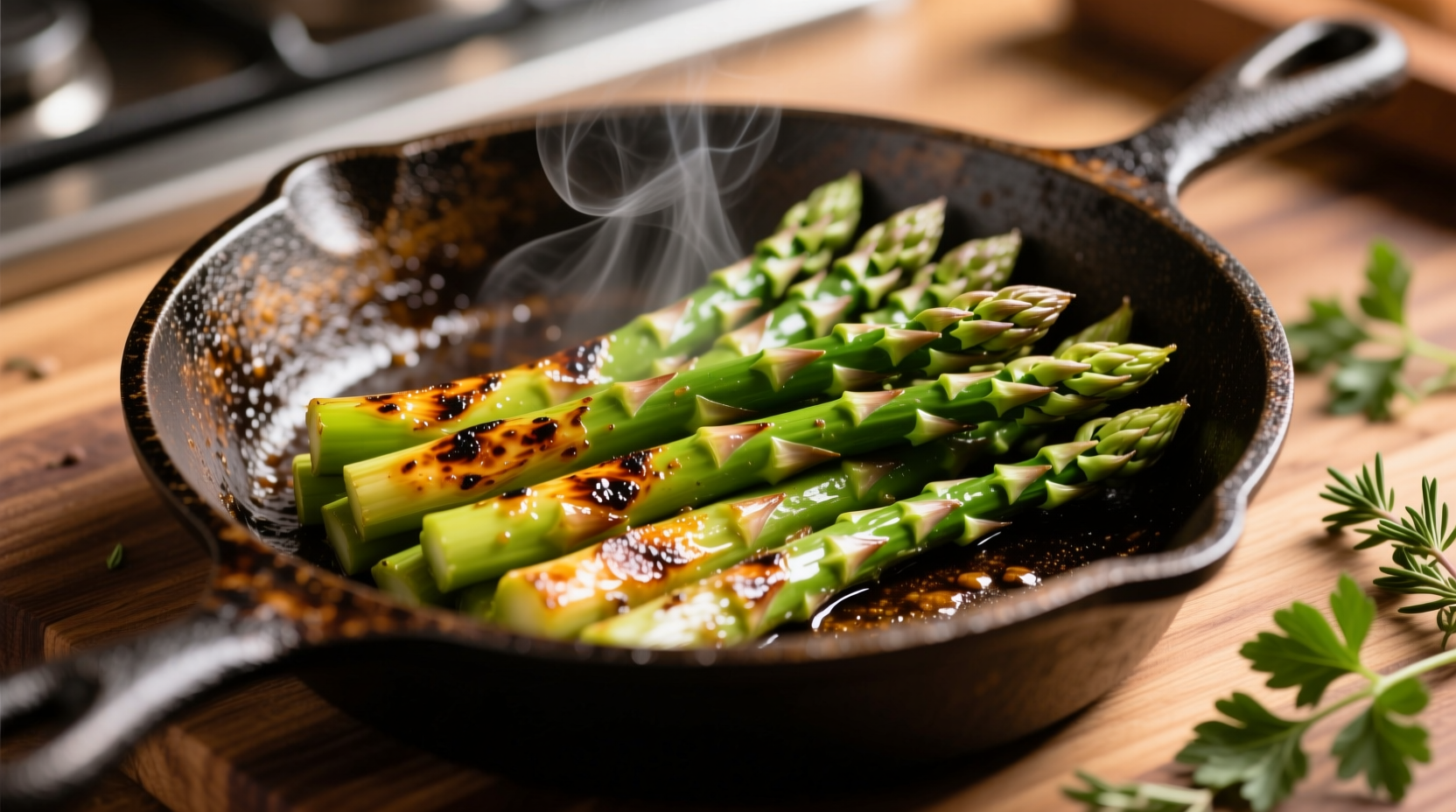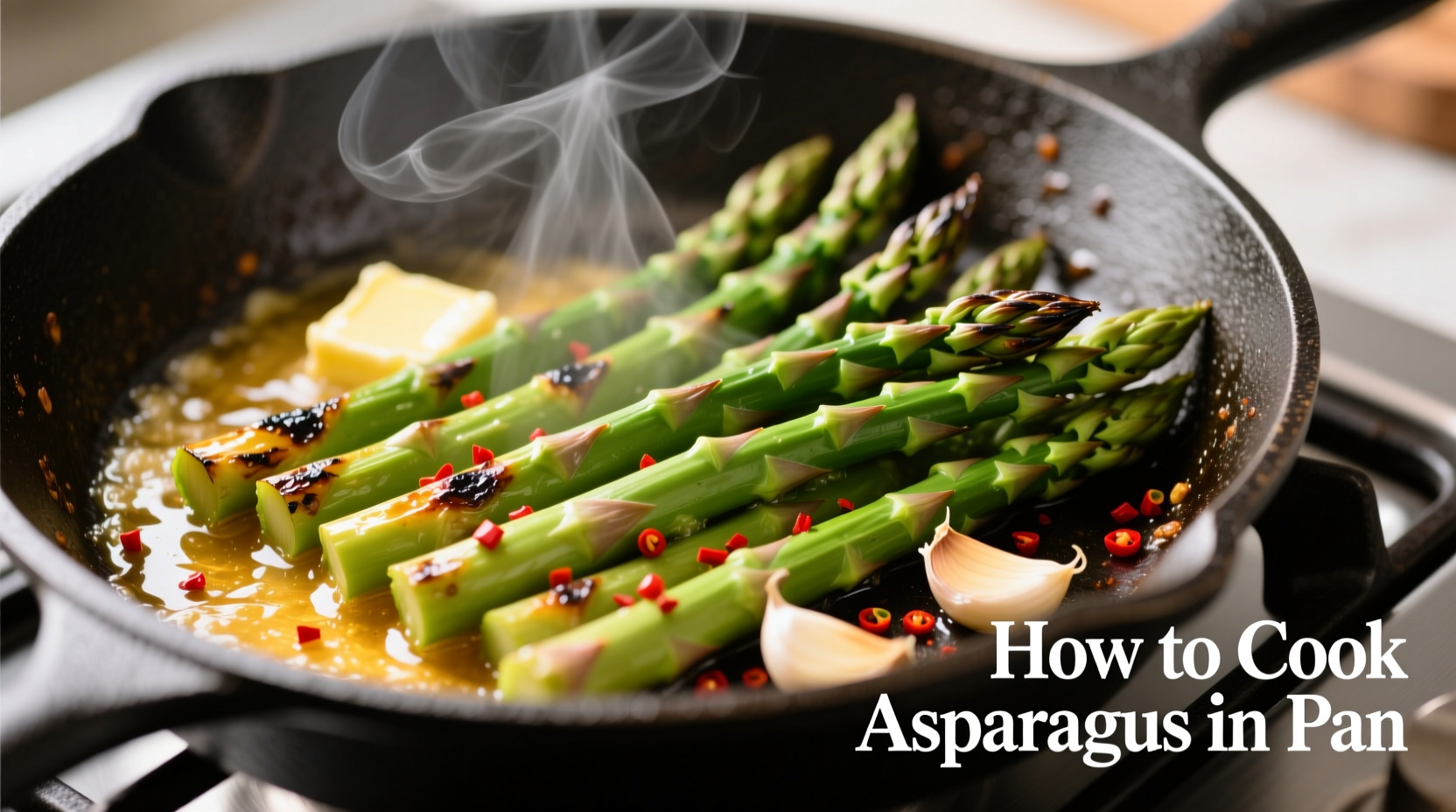Why Pan-Cooking Asparagus Beats Other Methods
When you're craving tender-crisp asparagus with caramelized edges in under 10 minutes, your skillet becomes the ultimate kitchen tool. Unlike boiling (which leaches nutrients) or roasting (which takes longer), pan-cooking delivers restaurant-quality results with minimal effort. According to the USDA Food Safety and Inspection Service, proper vegetable cooking methods preserve up to 90% of water-soluble vitamins compared to boiling.
Your Step-by-Step Asparagus Transformation
Preparation: Setting Up for Success
Start with fresh asparagus - look for firm, bright green stalks with tight tips. The thickness determines your cooking approach:
| Asparagus Thickness | Prep Method | Cooking Time |
|---|---|---|
| Thin (pencil-width) | Trim 1 inch from ends | 4-5 minutes |
| Medium (index finger) | Trim woody ends | 5-6 minutes |
| Thick (thumb-width) | Peel lower half, trim ends | 6-7 minutes |
Professional chefs at the James Beard Foundation recommend the "snap test" for perfect trimming: hold a spear at both ends and bend until it naturally breaks at the tough point.
The Perfect Pan Technique
Follow these steps for consistently excellent results:
- Dry thoroughly - moisture causes steaming instead of searing (Cornell University Food Science confirms this affects texture)
- Preheat skillet - medium-high heat for 2 minutes before adding oil
- Arrange in single layer - overcrowding lowers pan temperature
- Cook undisturbed for 2 minutes - creates beautiful sear marks
- Rotate 90 degrees - for even browning on all sides
- Finish with flavor boosters - lemon zest, garlic, or herbs in final minute

Avoid These Common Mistakes
Even experienced cooks make these errors that compromise your asparagus:
- Adding salt too early - draws out moisture and prevents proper browning
- Using cold oil - always heat oil until shimmering before adding vegetables
- Overcrowding the pan - steam instead of sear, resulting in soggy texture
- Stirring too frequently - prevents the development of those desirable caramelized edges
Flavor Variations Worth Trying
Elevate your basic preparation with these chef-approved combinations:
- Mediterranean style: Finish with lemon juice, toasted pine nuts, and feta cheese
- Asian-inspired: Toss with sesame oil, soy sauce, and red pepper flakes
- French classic: Deglaze pan with white wine and finish with tarragon butter
- Garlic-parmesan: Add minced garlic in last 2 minutes and grated parmesan
Serving and Storage Tips
Asparagus tastes best served immediately, but if you have leftovers:
- Serving temperature: Always serve hot - asparagus cools quickly
- Pairings: Excellent with grilled fish, roasted chicken, or as part of a spring salad
- Storage: Keep in airtight container up to 3 days (per FDA food storage guidelines)
- Reheating: Briefly warm in skillet rather than microwave to maintain texture
Why This Method Works Every Time
The science behind perfect pan-cooked asparagus involves precise temperature control. When your skillet reaches 350°F (the ideal searing temperature according to culinary research from the Culinary Institute of America), the Maillard reaction creates complex flavors while preserving the vegetable's natural crunch. This technique delivers maximum nutritional value - asparagus contains vitamin K, folate, and antioxidants that remain stable during quick cooking methods.











 浙公网安备
33010002000092号
浙公网安备
33010002000092号 浙B2-20120091-4
浙B2-20120091-4